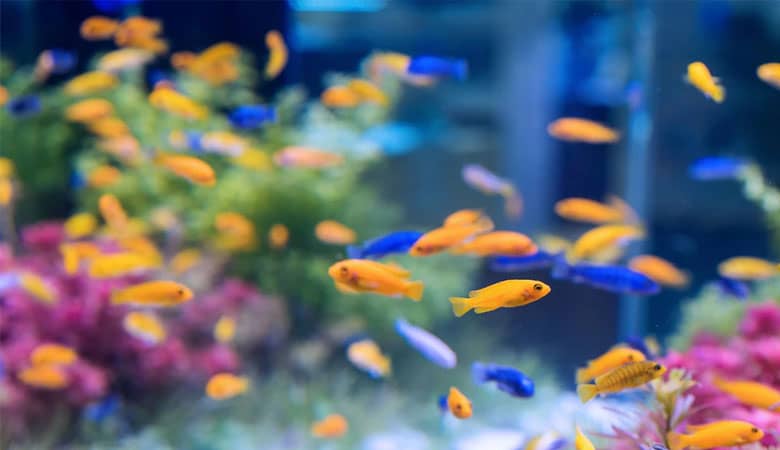If you’re a fish owner, you’re probably well aware of the importance of maintaining a clean and healthy environment for your fish. One of the most crucial aspects of this is performing regular water changes. It may not be the most exciting task on your to-do list, but it’s essential for the well-being of your fish.
In this blog post, we’ll be discussing why regular water changes are so important and how to properly perform them. From improving water quality to preventing the spread of disease, we’ll go over all the benefits of regular water changes and how they can help keep your fish happy and healthy.
The Benefits of Regular Water Changes
Water changes are critical to the health and well-being of your fish. By replacing some of the water in the tank, you can ensure that the water remains clean, safe, and healthy for your fish. Here are some of the specific benefits of regular water changes:
Improve Water Quality
Regular water changes can improve water quality by removing waste and toxins that build up in the tank over time. These toxins can be harmful to fish and can affect their overall health and well-being. By performing regular water changes, you can ensure that the water in the tank is clean and safe for your fish to swim in.
Maintain Water pH
Regular water changes can also help maintain a balanced pH and temperature in the tank. Fish have specific requirements for the pH and temperature of their water, and regular water changes can help ensure that these requirements are met. This can help prevent stress and disease in your fish.
Prevent Disease
Regular water changes can also help prevent the spread of disease in the tank. Disease-causing organisms can build up in the water over time, and regular water changes can help remove them and reduce the risk of your fish becoming sick. This can help keep your fish healthy and happy for a longer period of time.

How to Change the Water in Your Fish Tank
Performing regular water changes is an important part of maintaining a healthy environment for your fish. To ensure that your water changes are effective, it’s important to understand the proper techniques and equipment needed. Here’s a step-by-step guide on how to perform a water change:
- Gather the necessary equipment: You will need a water conditioner, a gravel vacuum, a siphon hose, and a clean bucket or container. The water conditioner is used to remove any chlorine or chloramines present in tap water, which can be harmful to fish. A gravel vacuum is used to remove waste and debris from the bottom of the tank, while a siphon hose is used to remove water from the tank.
- Clean the tank: Before you begin the water change, make sure to clean the tank. This includes removing any excess food, debris, or dead plants. If you have a gravel substrate, use the gravel vacuum to remove waste and debris from the bottom of the tank.
- Prepare the new water: Fill the clean bucket or container with tap water and add the appropriate amount of water conditioner according to the instructions on the product. Allow the water to sit for at least 20 minutes to allow the chlorine and chloramines to dissipate.
- Remove water from the tank: Use the siphon hose to remove about 25-30% of the water from the tank. Be sure to avoid removing the entire water from the tank, as this can stress the fish.
- Add the new water: Slowly pour the prepared water into the tank. Be sure to pour it slowly to avoid creating a current that can stress the fish.
- Check water parameters: After the water change, check the pH, temperature, and ammonia levels of the water to ensure they are within the appropriate range for your fish.
When to Perform a Water Change
While it’s generally recommended to perform a partial water change of 25-30% once a week for smaller tanks and every 2 weeks for larger tanks, there are certain signs that indicate it’s time to change the water regardless of the schedule.
When to Change the Water
There are a few visual cues that will let you know you need to change the water.
- The water appears cloudy or discolored: Cloudy water or discoloration can be a sign of poor water quality or an overgrowth of algae.
- Fish showing unusual behavior: Fish that are struggling to swim or sitting on the bottom could mean the water in the tank is polluted.
- Deposits on the tank walls: The presence of deposits on the tank walls, such as algae or brown slime, can indicate poor water quality.
- Foul odor: A strong or foul odor coming from the tank can be a sign that the water is not clean and needs to be changed.
- Fish appear stressed: Fish that are gasping for air, lethargic, or have clamped fins can be a sign of stress, which can be caused by poor water quality.
If you notice any of these signs, it’s important to perform a water change as soon as possible to ensure the health and well-being of your fish. Remember, regular water changes are essential for maintaining a clean and healthy environment for your fish.
Common Mistakes to Avoid
While regular water changes are an essential part of fish care, there are some common mistakes that fish keepers make that can actually harm their fish. Here are some pitfalls to avoid when performing water changes:
- Not using treated water: Tap water contains chlorine and chloramines, which can be harmful to fish. Make sure to use a water conditioner to remove these chemicals before adding the water to the tank.
- Changing too much water at once: Removing too much water at once can cause a rapid change in water chemistry, which can stress or harm the fish. Stick to the recommended 25-30% water change for the size of your tank.
- Not thoroughly cleaning the tank before the water change: It’s essential to remove all visible waste, debris, and leftover food from the tank before performing a water change. A dirty tank will lead to poor water quality, and the new water will not be as effective in keeping the fish healthy.
- Over-cleaning the tank: Be aware of over-cleaning the tank, as this can lead to a rapid change in water chemistry which can be stressful for the fish and even cause harm.
- Not testing the water after a change: Testing the water after a change is crucial to ensure that the pH, temperature, and other parameters are within the acceptable range for the species you are keeping.
- Forgetting to turn off the heater (if your tank has one): When performing a water change in a heated tank, make sure to turn off the heater. Sudden changes in temperature can stress the fish, especially if you are keeping species that require a specific temperature range.
- Not properly storing the water conditioner: Make sure to store the water conditioner in a cool, dry place, and discard it if it has expired.
By avoiding these common mistakes, you can ensure that your water changes are effective and that your fish are safe and healthy. Remember, a little extra care goes a long way when it comes to maintaining a clean and healthy environment for your fish.
Conclusion
Regular water changes may seem like a tedious task, but it’s an essential part of fish keeping, and it’s one of the best ways to ensure that your fish are healthy and happy for a long time. Remember to do it regularly, and your fish will thank you.

